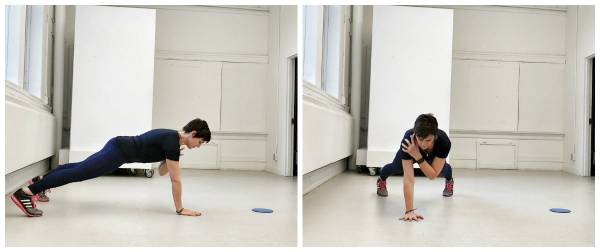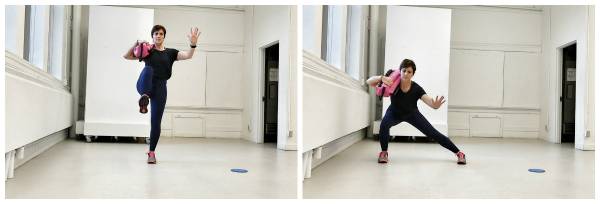This year I turn 47 years old. It’s pretty hard for me to get my head around this number, when deep down inside I still feel like I’m in my 20s—but the numbers don’t lie. When I was training in my 30s, I never gave a second thought to how my body would change in another decade. I just assumed I could carry on as before and not change a thing.
This year I turn 47 years old. It’s pretty hard for me to get my head around this number, when deep down inside I still feel like I’m in my 20s—but the numbers don’t lie. When I was training in my 30s, I never gave a second thought to how my body would change in another decade. I just assumed I could carry on as before and not change a thing. The problem with this way of thinking is that the body doesn’t stay the same as we age, so we need to understand a few basic things as we enter middle-age (I know, such a horrible term), and apply this knowledge to our workouts.
Eating less and working out more as we age just doesn’t work. As our metabolism changes, there is a direct impact on both our cortisol and insulin levels. This, in turn, will show up in the form of weight gain. It is at this time of life that we really need to focus on maintaining both an intelligent exercise protocol and a healthy diet.
Keeping weight gain in check is not the only reason for building lean muscle. One of my main observations as a coach is that most people over the age of 40 come with a nagging injury or three. All those stupid things that we did in our 20s that we seemed to recover from easily, come back to haunt us. Injury prevention has to be top of our priority list.
The Role of DVRT
This is where the DVRT (Dynamic Variable Resistance Training) system comes into play in a huge way. The movements we perform using the Ultimate Sandbag not only help build functional strength, but also help us to build stability, and help to protect the joints and spine from injury.
In my late 30s, I suffered from chronic back pain from an impact injury (I fell learning to ice-skate), and the pain was intolerable. Following intense physiotherapy, I looked at the way I was exercising, and knew I need to start looking for more reliable and intelligent methods of training. Since discovering DVRT, I can honestly say that I have been completely injury-free. I feel that statement alone is worth its weight in gold. I am nearly 50, strong, and mobile, with huge amounts of energy that these short, sophisticated workouts provide.
We need to move with purpose, build strength, muscular endurance, stability, and mobility. We need to do all of that in a small amount of time, because let’s face it: who has the time to workout 60 minutes everyday? These excercises are designed to check all the boxes we need.
Tall Kneeling Arch Push Out
Most people over 40 have a hard time trying to engage their hamstrings and glutes, have lower back pain, or stiff hip flexors. Another common problem is that they are so tight through their upper body that they have very limited movement. I am pretty sure many of us have all felt one of these issues at some time or another.
This exercise is perfect to identify and correct these issues.
Tip: Turn the toes under and drive them into the floor. This will help engage the hamstrings and glutes (which you should be engaging throughout the exercise).
Pledge Plank
Stabilizing our body is more important than ever at this age, so making your regular plank a pledge plank is a great way to kick in those stabilizing muscles. Working with the chains of our body, drive down the opposite hand and foot, actively engage your core and glutes, and feel the power of the cross-pattern chain work.

Tip: Make both the stabilizing hand and the foot part of the exercise. By actively pushing them down into the floor, you should feel the limbs create tension, which will help this exercise be more successful.
USB Lateral Lunge to Balance Step
Here is a double whammy: a lateral movement and a challenge to our stability. With the bag in the shouldered position, we add extra resistance to the movement.

Tip: Actively drive the supporting foot into the floor to create lightness in your step to bring you back up to the balance step position. At this stage, the supporting foot is also engaged to help with stability.
Make your 40s your best decade yet:






